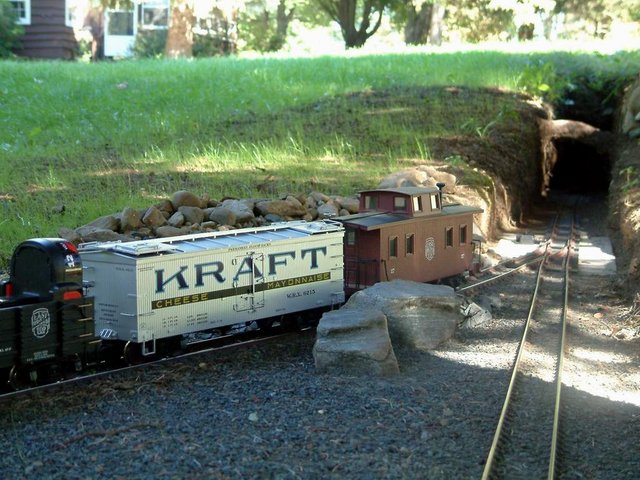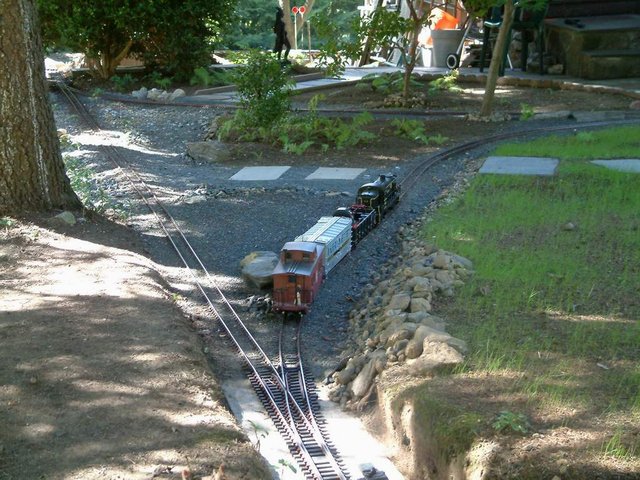You all remember Deep Cut - right ? [url=photo.cvsry.com/deep1-1280.jpg]

[/url][color=blue]Deep Cut - Circa 2004 - FF: Click to Enlarge - IE: Right Click Photo and select Open Link in New Window to Enlarge[/color] [url=photo.cvsry.com/deep2-1280.jpg]
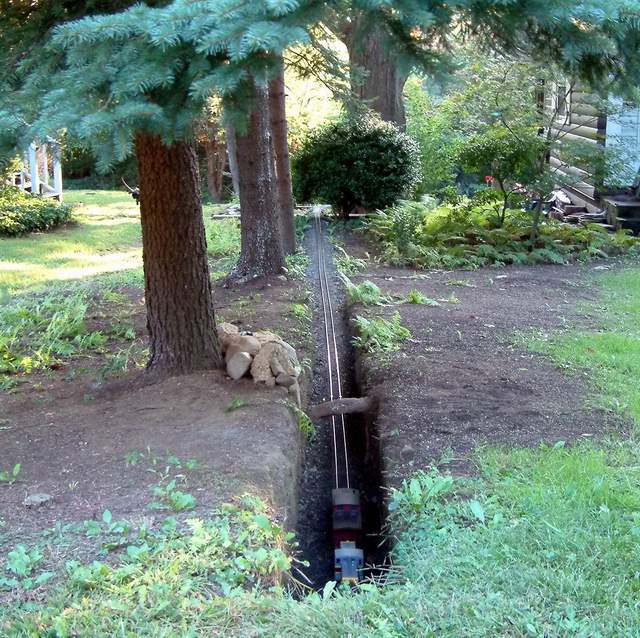
[/url][color=blue]Deep Cut - Circa 2004 - FF: Click to Enlarge - IE: Right Click Photo and select Open Link in New Window to Enlarge[/color] When Deep Cut was opened nearly 6 years ago, many said it would collapse within a year. The best advice I recall from the original 2004 post on MLS What to do about Deep Cut was from Ric Golding who suggested that I do nothing and just let nature take it’s course. Since that was very easy advice to follow, I chose to take it. [url=photo.cvsry.com/Deep1024.jpg]
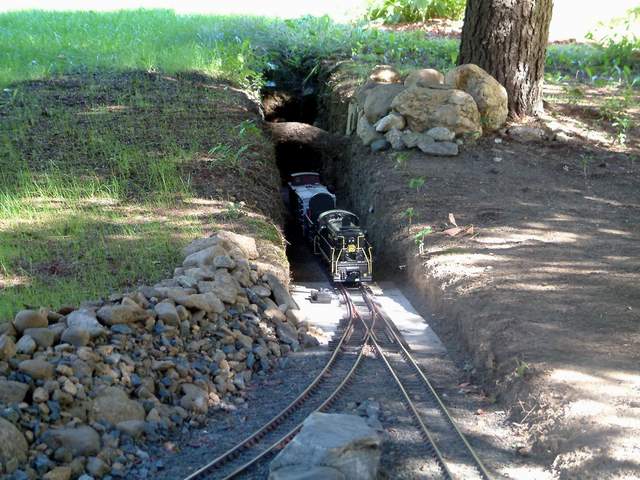
[/url][color=blue]Deep Cut - Circa 2005 - FF: Click to Enlarge - IE: Right Click Photo and select Open Link in New Window to Enlarge[/color] [url=photo.cvsry.com/Pine2-1024.jpg]
[/url][color=blue]Deep Cut - Circa 2005 - FF: Click to Enlarge - IE: Right Click Photo and select Open Link in New Window to Enlarge[/color] [url=photo.cvsry.com/Pine4-1024.jpg]
[/url][color=blue]Deep Cut - Circa 2005 - FF: Click to Enlarge - IE: Right Click Photo and select Open Link in New Window to Enlarge[/color] Over the years the sides have eroded some. Each spring I need to uncover the tracks moving several shovels full of earth. As of last fall, the bottom of the cut was easily 6 inches wider than the top due to eroding earth. At this point, anyone going too close to the edge risks collapsing the cut. [url=lsc.cvsry.com/Loop-Plan-1024-1.JPG]
[/url][color=blue]Deep Cut - Circa 2006 - FF: Click to Enlarge - IE: Right Click Photo and select Open Link in New Window to Enlarge[/color] [url=lsc.cvsry.com/Loop-Plan-1024-3.JPG]
[/url][color=blue]Deep Cut - Circa 2006 - FF: Click to Enlarge - IE: Right Click Photo and select Open Link in New Window to Enlarge[/color] There have been plans in the past to create a dead-end tunnel to replace the cut. These plans were either too work intensive (block walls/top) or too expensive (corrugated PVC drain pipe) so the cut was left to weather. Today, the railroad received a donation of a 4 foot piece of 24 inch PVC drain pipe. This, in combination with a concrete block terminus / hatch should work perfect to finally close in Deep Cut. [url=lsc.cvsry.com/Border-2-1024.JPG]
[/url][color=blue]Deep Cut - Circa 2008 - FF: Click to Enlarge - IE: Right Click Photo and select Open Link in New Window to Enlarge[/color] [url=lsc.cvsry.com/Border-4-1024.JPG]
[/url][color=blue]Deep Cut - Circa 2008 - FF: Click to Enlarge - IE: Right Click Photo and select Open Link in New Window to Enlarge[/color] [url=lsc.cvsry.com/Expand08-1024.jpg]
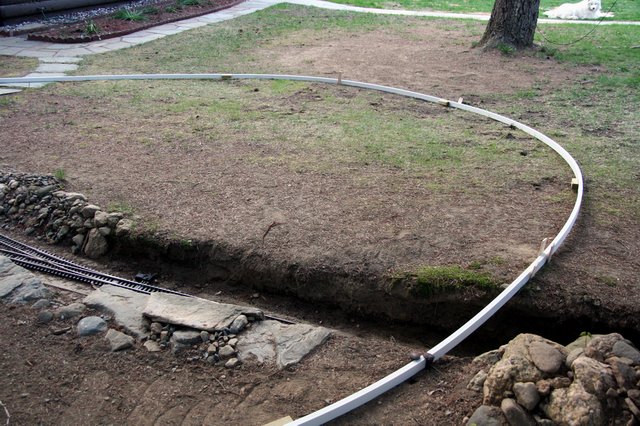
[/url][color=blue]Deep Cut - Circa 2008 - FF: Click to Enlarge - IE: Right Click Photo and select Open Link in New Window to Enlarge[/color] The photo below is the latest I have of the entrance area to the cut… [url=lsc.cvsry.com/SummerRun2-001-1200.jpg]
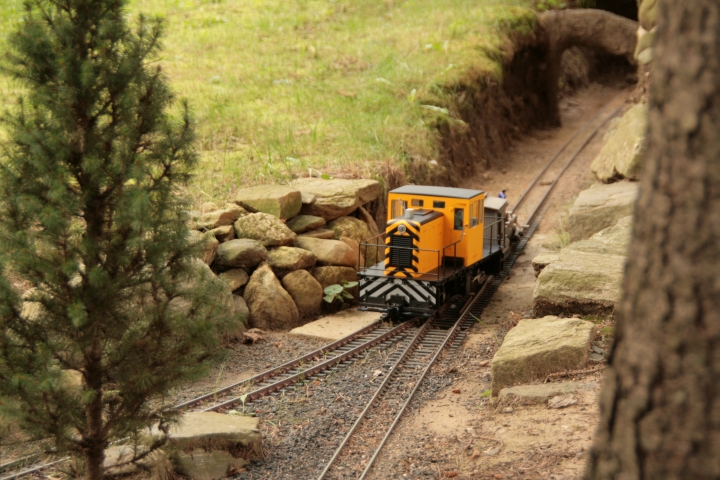
[/url][color=blue]Deep Cut - Circa 2009 - FF: Click to Enlarge - IE: Right Click Photo and select Open Link in New Window to Enlarge[/color] I’ll continue to work in large rocks to replace the dirt wall at the left until I reach what Dave M. has named Natural Bridge. The PVC Pipe and some kind of a tunnel portal will begin on the far side of the root. Everything in the view below will remain as a cut, and everything out of view at the left will become a tunnel. [url=lsc.cvsry.com/SummerRun-04-1200.jpg]
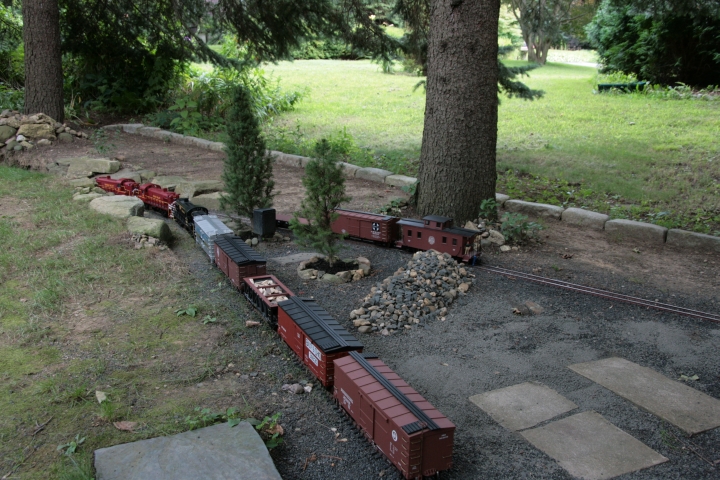
[/url][color=blue]Deep Cut - Circa 2009 - FF: Click to Enlarge - IE: Right Click Photo and select Open Link in New Window to Enlarge[/color] One worry I had early on when thinking about a dead-end tunnel was hitting the bumper and derailing. When we visited Brent, Ontario with Fred and the American Invasion crew, I noticed signs along the right-of-way giving car counts. I’m thinking that I just need a sign placed before the portal, as far away as the tunnel is deep. The operational rule will be to stop short of the tunnel, note where on the train the sign lines up, then slowly proceed into the tunnel, stopping when that point reaches the portal. Now I just need to wait for the ground to thaw  [Edited to fix broken picture links] [Edited to fix broken URL link]
[Edited to fix broken picture links] [Edited to fix broken URL link]
